Chocolate's Universal Appeal
Chocolate, derived from the cacao bean, is a beloved treat enjoyed worldwide for its rich flavor and versatility. It comes in various forms, including dark, milk, and white chocolate, each offering a unique taste experience.

Whether enjoyed as a standalone delight or incorporated into various culinary creations, chocolate captivates the senses with its luscious texture and complex flavor profile
Renowned for its indulgent qualities, chocolate is used in desserts, confections, and savory dishes, adding depth and richness to culinary creations.
From its antioxidant properties to its mood-boosting effects, chocolate has long been associated with various wellbeing benefits, making it a favorite among food enthusiasts.
Chocolate's appeal is universal and enchants taste buds on every continent.
Today, chocolate is no longer just a simple treat, but a global phenomenon with a multitude of tastes and a growing emphasis on sustainability.
Exploring the history of chocolate reveals not only a treat, but also a cultural legend with a history as versatile and rich as the flavors it delivers.
Chocolate is a delectable treat crafted from roasted and ground cacao beans, often sweetened and combined with various ingredients like sugar and milk. With its velvety texture and varied flavors, ranging from deep, bitter notes to sweet, creamy undertones, chocolate excites and stimulates the senses.
12 Most Important Facts To Know About Chocolate
-
Origins: Chocolate has ancient origins, with its history dating back to ancient Mesoamerican civilizations like the Mayans and Aztecs, who revered cacao as a sacred and ceremonial crop.
-
Cacao Tree: The cacao tree, scientifically known as Theobroma cacao, is native to the tropical regions of Central and South America. It produces cacao pods containing cacao beans, which are the primary ingredient in chocolate.
-
Processing: The process of making chocolate involves several steps, including harvesting, fermenting, drying, roasting, grinding, conching, tempering, and molding. Each step is crucial in developing chocolate's flavor, texture, and quality.
-
Types of Chocolate: There are several types of chocolate, including dark chocolate, milk chocolate, white chocolate, and semi-sweet chocolate. Each type varies in its cocoa content, sweetness, and flavor profile.
-
Health Benefits: Dark chocolate, in particular, is known for its potential health benefits when consumed in moderation. It contains antioxidants called flavonoids, which may help improve heart health and lower blood pressure.
-
Chocolate and Mood: Chocolate contains compounds such as theobromine and phenylethylamine, which can stimulate the release of endorphins and serotonin in the brain, leading to feelings of pleasure and happiness.
-
Chocolate Production: The largest producers of chocolate are countries in West Africa, including Ivory Coast, Ghana, and Nigeria. These countries supply the majority of the world's cacao beans.
-
Chocolate Industry: The global chocolate industry is worth billions of dollars and encompasses various sectors, including chocolate manufacturing, confectionery, retail, and cocoa farming.
-
Chocolate Consumption: Chocolate is enjoyed worldwide, with people consuming it in various forms, including chocolate bars, truffles, bonbons, cakes, cookies, and beverages.
-
Sustainable Chocolate: There is growing awareness about the importance of sustainable chocolate production, which involves ethical sourcing of cacao beans, fair treatment of cacao farmers, and environmental conservation.
-
Chocolate Festivals: Chocolate festivals and events are held around the world to celebrate chocolate and showcase the talents of chocolatiers, pastry chefs, and chocolate makers.
-
Chocolate Happiness: Chocolate contains chemicals like tryptophan, which helps produce serotonin, a feel-good brain chemical. Plus, the taste and creamy texture trigger pleasure centers in the brain.
These facts provide a glimpse into the rich and diverse world of chocolate, highlighting its cultural significance, happy mood benefits, production methods, and global impact.
Chocolate Timeline
The history of chocolate stretches back millennia.
During this time, the wild cocoa plant, growing only in the lowlands of the Amazon, became a widely cultivated crop in the tropics.
In the 21st century, around four million tons are harvested worldwide every year and traded on the commodity exchanges, making the "drink of the gods" an increasingly valuable economic resource.
| Time Period | Key Events |
|---|---|
| 1500 BCE | The Olmec civilization in Mesoamerica produces the earliest known cacao-based beverage. |
| 600 CE | Mayan civilization incorporates cacao into their religious and social practices. |
| 1400 CE | Aztecs adopt cacao as a currency and continue to use it in beverages like xocolātl. |
| 1502 | Columbus brings cacao beans back to Spain after his fourth voyage to the Americas. |
| 1528 | Hernán Cortés introduces chocolate to the Spanish court. |
| 1600s | Chocolate becomes a popular beverage in European aristocratic circles. |
| 1828 | Coenraad van Houten invents a hydraulic press for cocoa powder production. |
| 1847 | Fry's produces the first solid chocolate bar in England. |
| 1875 | Daniel Peter and Henri Nestlé develop milk chocolate by adding condensed milk. |
| 1893 | Milton Hershey establishes the Hershey Chocolate Company in the United States. |
| 1913 | The first modern chocolate box, Whitman's Sampler, is introduced in the U.S. |
| 1930s | The chocolate industry expands with the introduction of popular brands like Mars and Snickers. |
| 1940s | Chocolate becomes a standard part of U.S. soldiers' rations during World War II. |
| 1971 | The first Starbucks opens, marking the beginning of the gourmet chocolate era. |
| 1990s | The artisanal and organic chocolate movement gains momentum. |
| 2000s | Dark chocolate is recognized for its potential health benefits, leading to increased popularity. |
| Present | Craft chocolate and bean-to-bar producers gain prominence, emphasizing quality and ethical sourcing. |
This timeline provides a glimpse into the rich history and evolution of chocolate from its ancient Mesoamerican roots to its modern-day global popularity.
The History of Chocolate: A Fascinating Journey of Discovery
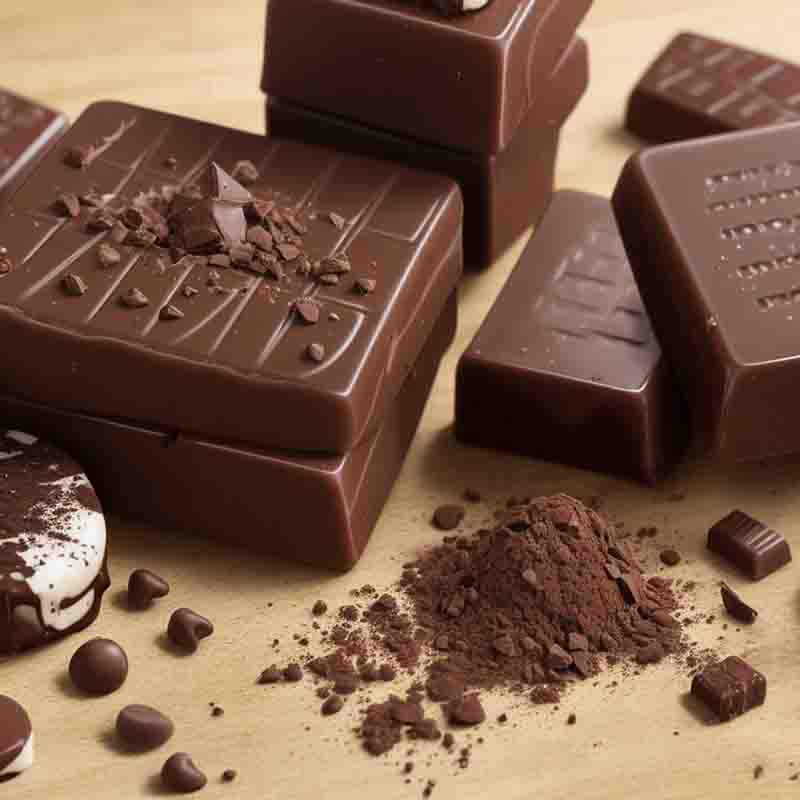
Chocolate's versatility ranges from dark and intense to milky and sweet varieties and offers a spectrum of sensory delights for discerning palates.
This tour will introduce you to the diversity of chocolate, its origins, the art and science of chocolate making and the different types of chocolate.
Chocolate's Ancient Beginnings
The story of chocolate begins in ancient Mesoamerica, where the Olmec civilization is credited with the earliest evidence of chocolate consumption.
Moving forward, the Aztec and Mayan civilizations embraced chocolate in religious rituals, considering it a divine elixir.
This sacred significance laid the foundation for chocolate's cultural importance.
Chocolate in Europe
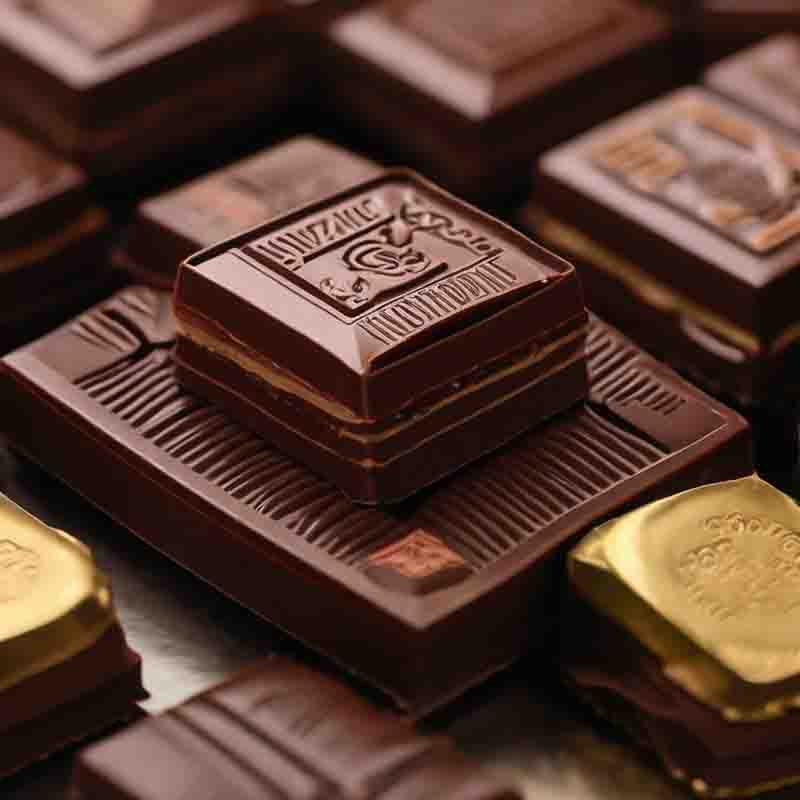
The story of chocolate begins in ancient Mesoamerica, where the indigenous peoples of the region, such as the Mayans and Aztecs, first discovered the cacao tree.
Christopher Columbus played a pivotal role in bringing chocolate to Europe after encountering it during his travels.
However, it was the Spanish who refined the bitter Mesoamerican concoction, introducing sweeteners like sugar and honey.
This transformation marked the beginning of chocolate's evolution into the beloved treat we know today.
Rise of the Chocolate Houses
Fast forward to 17th-century Europe, where chocolate houses emerged as social hubs for the elite.
Chocolate became synonymous with luxury and indulgence, a symbol of sophistication enjoyed in the company of the aristocracy.
This period witnessed the widespread adoption of chocolate as a fashionable beverage.
The Art and Science of Chocolate Making
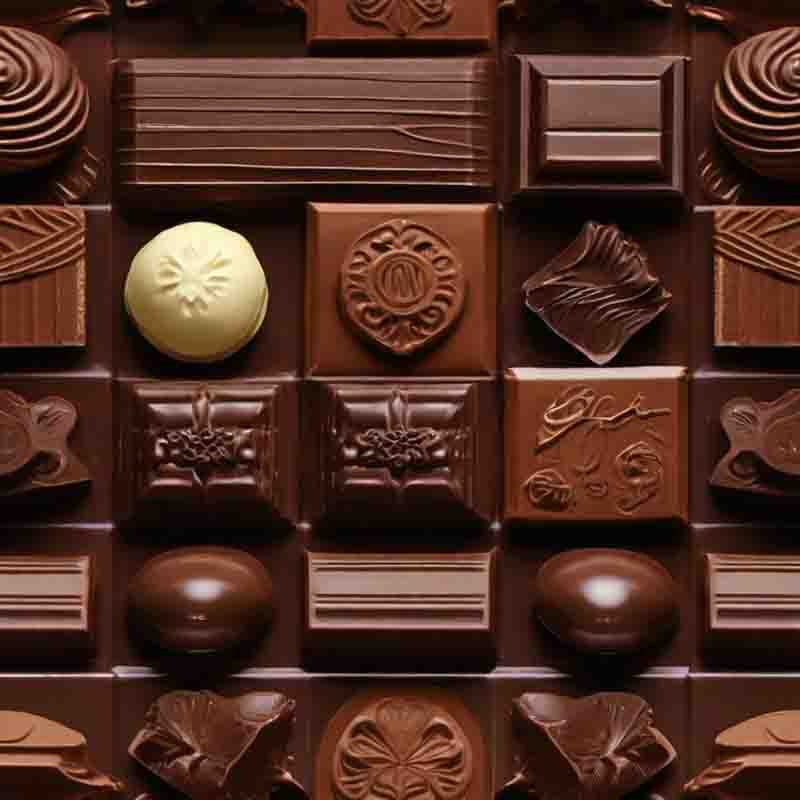
Chocolate holds a special place in cultures around the world, where it is celebrated as a symbol of love, indulgence, and hospitality.
The art and science of chocolate making involve a meticulous process, from harvesting cacao pods to the delicate balance of ingredients.
The quality of chocolate is influenced by factors like cacao percentage, production methods (including the distinction between bean-to-bar and industrial processes), and ethical sourcing practices.
From Bean to Bar
The journey of chocolate from bean to bar is a fascinating process.
It commences with the harvesting of cacao pods, followed by fermentation and drying of the beans.
Roasting and grinding transform the beans into a smooth, liquid cocoa mass, eventually solidifying into the chocolate we relish.
Distinguishing between mass-produced and artisanal chocolates underscores the importance of craftsmanship in the final product.
Cacao Varieties and Terroir
Cacao, the cornerstone of chocolate, exhibits diverse flavor profiles based on its variety and terroir.
Different cacao bean varieties contribute distinct nuances, while the concept of terroir emphasizes the impact of geography and climate on chocolate flavor.
This interplay adds layers of complexity to the art of chocolate making.
The Role of Conching
Central to achieving the velvety texture and rich flavor of chocolate is the conching process.
This mechanical treatment involves heating and agitating the chocolate, refining its particle size and enhancing its smoothness.
The duration and intensity of conching influence the final quality, making it a crucial step in the chocolate-making journey.
Chocolate Varieties and Their Distinctive Flavors
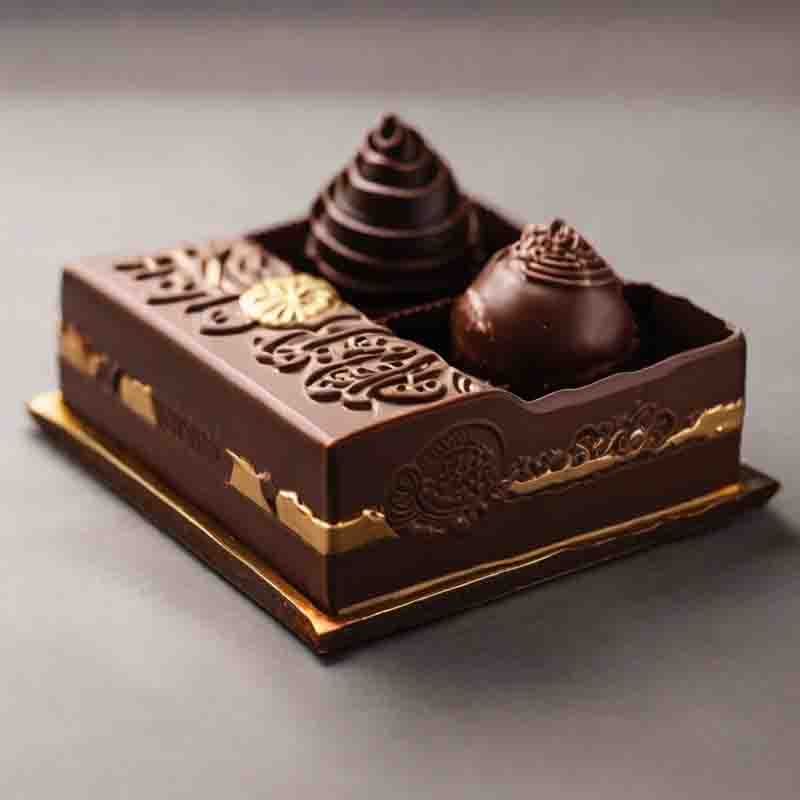
By exploring the diverse facets of chocolate-making, from bean to bar, we gain a deeper appreciation for this extraordinary delicacy and the people and places behind its creation.
The world of chocolate is a palette of flavors and textures, with dark, milk, and white chocolate taking center stage.
Each type offers a distinct sensory experience, from the intense richness of dark chocolate to the creamy sweetness of milk chocolate and the smooth elegance of white chocolate.
Dark Chocolate
Dark chocolate, characterized by a high percentage of cacao, offers an intense flavor experience.
Beyond its bold taste, dark chocolate boasts health benefits, including antioxidants and potential cardiovascular advantages.
Exploring the nuances of dark chocolate unveils a world of sophistication and depth.
Milk Chocolate
The addition of milk solids and sugar to cacao creates the beloved sweetness of milk chocolate.
Widely used in confectionery, this variety appeals to those with a penchant for a milder chocolate experience.
Understanding the delicate balance between cacao and milk components is essential in crafting high-quality milk chocolate.
White Chocolate
White chocolate, often a subject of debate among chocolate enthusiasts, lacks cacao solids but incorporates cocoa butter, sugar, and milk.
Appreciating the unique characteristics of white chocolate involves understanding its creamy texture and sweet, vanilla-infused flavor.
Despite its divergence from traditional chocolate, white chocolate holds its own allure.
Cacao Percentage and Quality
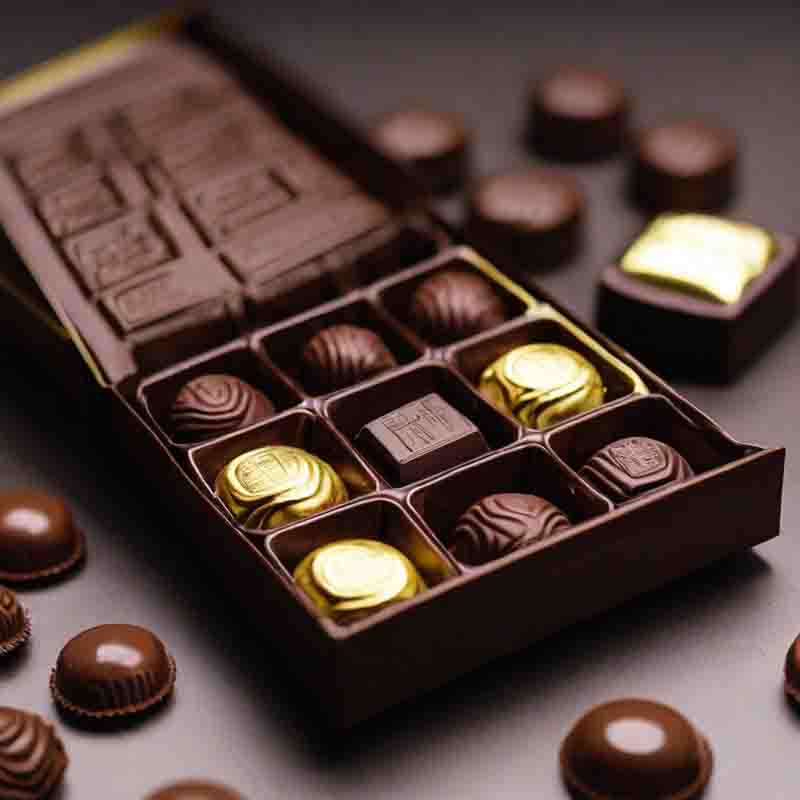
Beyond its role as a standalone treat, chocolate is a versatile ingredient that adds depth and richness to a wide range of culinary creations.
The correlation between cacao percentage and chocolate quality is a critical factor in determining a chocolate's intensity.
Contrary to popular belief, a higher cacao percentage does not necessarily equate to increased bitterness.
Instead, it signifies a richer, more complex flavor profile. Debunking misconceptions surrounding cacao content allows consumers to make informed choices.
Bean-to-Bar vs. Industrial Production
In the chocolate industry, the distinction between bean-to-bar and industrial production significantly impacts flavor and quality.
Bean-to-bar producers emphasize craftsmanship, overseeing every stage of production for a personalized touch.
Recognizing these differences empowers consumers to appreciate the dedication and authenticity behind artisanal chocolate.
Sustainable and Ethical Sourcing
The chocolate industry is increasingly embracing sustainable and ethical sourcing practices.
From fair trade initiatives to environmentally conscious farming methods, these efforts not only contribute to social responsibility but also enhance the overall flavor and quality of chocolate.
Recognizing the impact of these practices adds a layer of appreciation to the chocolate experience.
Tasting and Pairing: Elevating the Chocolate Experience
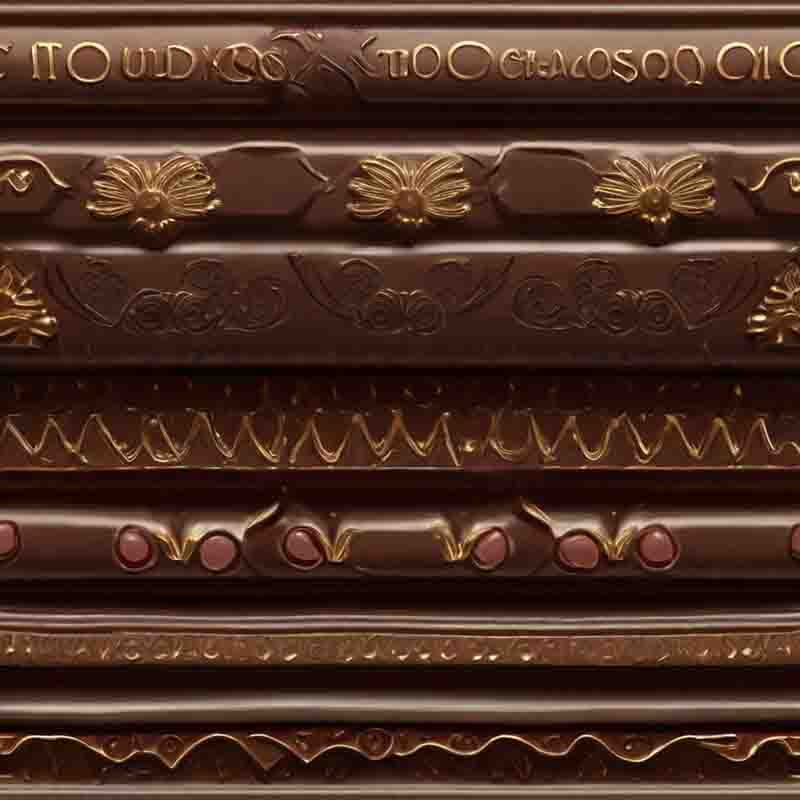
Pairing chocolate is an art form that transcends the boundaries of sweet indulgence, creating a sensory experience that dances on the palate.
The Art of Chocolate Tasting
Tasting chocolate is an art that involves engaging all the senses.
Techniques such as allowing the chocolate to melt slowly on the palate and savoring the evolving flavors enable enthusiasts to discern the subtleties within different chocolate varieties.
Developing a refined palate for chocolate enhances the overall tasting experience.
Chocolate and Wine Pairing
The marriage of chocolate and wine is a harmonious blend of flavors that can elevate the tasting experience.
Understanding the complementary notes between specific chocolates and wines allows connoisseurs to create delightful pairings, where the sum is greater than its parts.
Exploring this sophisticated pairing opens avenues for culinary creativity.
Innovative Chocolate Pairings
Beyond traditional pairings, chocolate enthusiasts are increasingly experimenting with innovative combinations.
From unexpected spices to exotic fruits, the versatility of chocolate extends far beyond conventional boundaries.
This exploration of novel pairings reflects the evolving landscape of chocolate appreciation in modern gastronomy.
The Future of Chocolate: Trends and Innovations
From its ancient origins in Mesoamerica to the modern-day innovations of artisanal chocolatiers, chocolate continues to captivate and delight.
Sustainable Practices and Environmental Concerns
As environmental consciousness grows, the chocolate industry is adapting to address sustainability concerns.
From ethical sourcing to eco-friendly packaging, these initiatives shape the future of chocolate.
Consumer support for sustainable practices is not only environmentally responsible but also contributes to the overall quality of the chocolate experience.
Health and Wellness Trends
The intersection of chocolate with health and wellness is a burgeoning trend.
Producers are incorporating superfoods and health-oriented ingredients into chocolate formulations, creating a balance between indulgence and nutritional benefits.
Exploring this evolving landscape allows consumers to align their chocolate choices with personal health goals.
Artisanal Chocolatiers and Craftsmanship
A resurgence of artisanal chocolatiers emphasizes craftsmanship and attention to detail.
Small-batch producers infuse passion into their creations, offering unique flavor profiles and limited-edition releases.
Appreciating the dedication behind artisanal chocolate contributes to the preservation of traditional techniques and the continued innovation within the industry.
The Chocolate-Making Process: From Bean to Bar
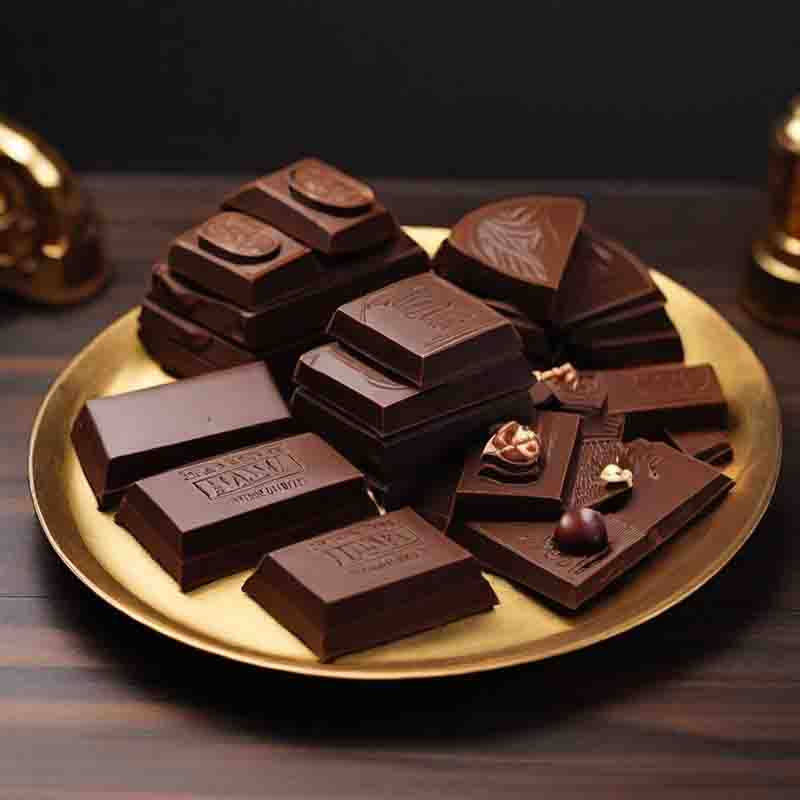
The chocolate industry is constantly evolving, driven by consumer demand for new flavors, textures, and experiences.
Harvesting and Fermentation
The journey of chocolate begins with the cultivation of cocoa beans, a process that spans tropical regions where cacao trees thrive.
The critical stages of cocoa bean cultivation involve careful harvesting of ripe pods from the cacao tree.
Harvesting is a delicate task, as only fully mature pods yield the rich flavors and aromas necessary for high-quality chocolate.
Once the pods are harvested, they are opened to reveal the cocoa beans nestled within the pulp.
The next crucial step in the chocolate-making process is fermentation.
The freshly extracted beans, still coated in pulp, are placed in fermentation boxes or laid out in the open.
Fermentation is a natural biochemical process where microorganisms break down the pulp surrounding the beans.
This stage is essential for flavor development, as it triggers chemical reactions that influence the final taste profile of the chocolate.
The duration and conditions of fermentation significantly impact the chocolate's flavor, ranging from fruity and acidic notes to deeper, more complex undertones.
Roasting and Conching
Following fermentation, the journey of the cocoa bean advances to roasting, a pivotal stage that contributes immensely to the chocolate's flavor complexity.
Roasting is performed to develop the characteristic chocolate taste by transforming the fermented beans into cocoa nibs.
The heat applied during roasting not only enhances flavor but also removes any residual moisture and helps loosen the outer shell of the beans.
The temperature and duration of roasting are carefully controlled, allowing chocolatiers to craft specific flavor profiles.
Dark chocolate, for instance, often undergoes longer and hotter roasting, resulting in a more pronounced and robust taste.
After roasting, the cocoa nibs are ground into a thick paste known as chocolate liquor.
It's at this point that the conching process commences.
Conching is the meticulous process of refining the texture and taste of the chocolate.
This involves agitating the chocolate liquor for an extended period, sometimes days, in conching machines.
The friction and heat generated during conching refine the particle size of the chocolate, ensuring smoothness and contributing to the development of its final flavor.
The process also aids in eliminating any remaining bitterness and intensifying the chocolate's creamy texture.
Conching is an art in itself, requiring expertise to balance time, temperature, and movement to achieve the desired sensory characteristics in the finished chocolate.
Wrapping it Up: From Bar to Delightful Chocolate
The transformation from cocoa bean to delightful chocolate isn't complete without careful packaging and presentation.
Packaging plays a crucial role in preserving the chocolate's freshness and protecting it from external factors like humidity and temperature variations.
The type of packaging, whether foil-wrapped bars, elegant boxes, or innovative wrappers, contributes to the overall consumer experience.
The visual appeal of the packaging often reflects the brand's identity and influences consumer perceptions.
Beyond protection and aesthetics, packaging also serves as a means to convey information about the chocolate, including cocoa content, origin, and any added ingredients.
The presentation of the final product is a culmination of the artistry and craftsmanship involved in the entire chocolate-making process.
Chocolatiers take pride in presenting their creations as works of edible art, and the packaging becomes a canvas for telling the story behind each bar.
From the cocoa bean to the final product on the shelf, the journey encapsulates the passion, precision, and dedication of the chocolatiers.
Each step in the process contributes to the nuanced flavors and textures that chocolate enthusiasts savor with every bite.
The journey from bean to bar is a testament to the alchemical process that transforms humble cocoa beans into a beloved treat, making chocolate not just a confectionery delight but a sensory experience that engages the palate and the soul.
Dark Chocolate and its Health Benefits
The allure of dark chocolate extends beyond its sumptuous taste, delving into a realm where indulgence meets potential health benefits.
At the core of dark chocolate's positive impact is its robust antioxidant profile.
Antioxidants, notably flavonoids, abound in dark chocolate, helping combat oxidative stress in the body.
This antioxidant prowess contributes to several potential cardiovascular advantages.
Studies suggest that regular, moderate consumption of dark chocolate may positively influence blood pressure, improve blood vessel function, and enhance overall heart health.
The key lies in the flavonoids, which may promote relaxation of blood vessels and reduce inflammation.
Moreover, the relationship between dark chocolate and mood enhancement is an intriguing facet.
The consumption of dark chocolate stimulates the release of endorphins, the body's natural mood lifters, fostering a sense of well-being.
Additionally, dark chocolate contains serotonin precursors, potentially contributing to an improved mood.
Beyond emotional well-being, dark chocolate's impact on cognitive function has gained attention.
The flavonoids in dark chocolate may enhance blood flow to the brain, promoting better cognitive performance.
While these potential health benefits are promising, it's essential to consume dark chocolate in moderation, considering its caloric content and the presence of sugar.
Embracing dark chocolate as a delightful treat with potential health perks aligns with the evolving narrative of chocolate as not only a guilty pleasure but a conscious choice for well-being.
Chocolate in a Balanced Diet
The notion of chocolate in a balanced diet challenges the traditional view of this delectable treat as an indulgence to be enjoyed sparingly.
Rather than relegating chocolate to the realm of guilty pleasures, a nuanced perspective acknowledges that, when consumed mindfully and in moderation, chocolate can be part of a healthy lifestyle.
The emphasis on moderation underscores the importance of savoring chocolate consciously, recognizing it as a source of pleasure rather than mindless consumption.
Incorporating chocolate into a balanced diet involves understanding its nutritional content and choosing varieties that align with dietary goals.
Opting for dark chocolate with higher cocoa content not only enhances flavor complexity but also provides more significant health benefits due to increased antioxidant levels.
Dark chocolate with cocoa percentages above 70% is a rich source of flavonoids and antioxidants.
It's essential to balance chocolate consumption with overall dietary habits, ensuring that it complements, rather than overshadows, nutrient-dense foods.
The occasional indulgence in chocolate aligns with the principles of intuitive eating, allowing for enjoyment without guilt.
Chocolate's role in celebrations and special occasions further emphasizes its place in a balanced diet.
Rather than viewing chocolate solely as a potential source of empty calories, recognizing its cultural and emotional significance enhances its value.
Chocolate has been a companion in celebrations for centuries, symbolizing joy, love, and shared moments.
Integrating chocolate into celebratory occasions contributes to a holistic approach to food, where nourishment extends beyond physical sustenance to emotional and social well-being.
Whether savoring a piece of dark chocolate for its potential health perks or enjoying a special chocolate treat in the context of a celebration, the key lies in mindful consumption.
By embracing chocolate as a conscious choice within a broader dietary framework, individuals can derive pleasure from this timeless indulgence while prioritizing overall well-being.
Chocolate: FAQ
Are you curious about music, art, technology, fashion, lifestyle, and beer?
If so, then you need to subscribe to the free Likewolf newsletter.
100% privacy. When you sign up, we'll keep you posted.
Limited Edition Whiskies
Appreciating the Elixir of Ages
